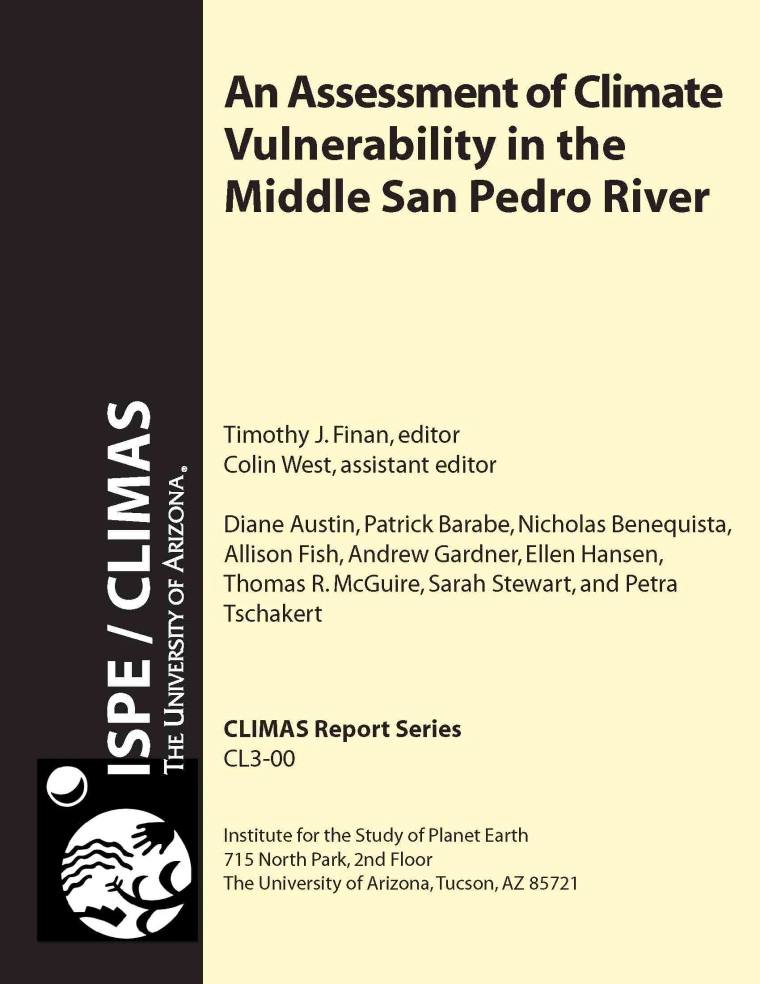Reference
Austin, D., Barabe, P., Benequista, N., Fish, A., Gardener, A., Hansen, E., McGuire, T., Stewart, S., & Tschakert, P. (2000). An Assessment of Climate Vulnerability in the Middle San Pedro River (Issue CL3-00). Climate Assessment for the Southwest, University of Arizona.
Publication File
Document


